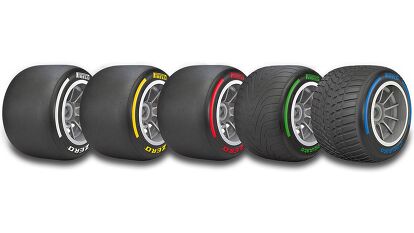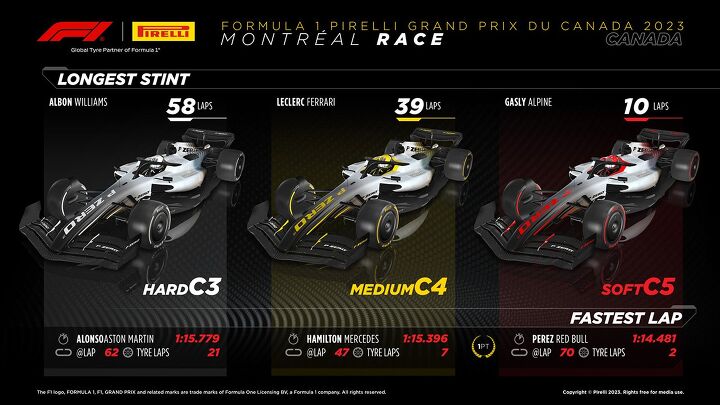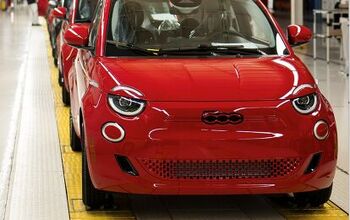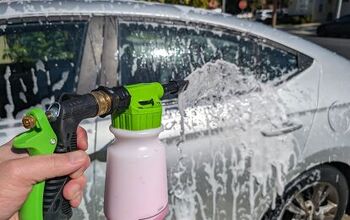How Pirelli Uses F1 Technology to Improve Tires for Your Vehicle
The Importance of Reliable Rubber, From Race to Road
It’s interesting that generally, when you ask someone what they believe the most important part of a car to be, they’ll immediately say the engine, the brakes, or perhaps the steering wheel. Those are all valid and important parts of a vehicle.
However, it’s rare that someone mentions the tires. This is surprising because those four parts of any and all vehicles are the driver’s only connection to their surface. Those four components keep the moving mass that is a car either headed in the right direction or veering off into the ditch. Obviously driver input has some bearing on this, but the rubber makes a huge impact as well.
When Pirelli invited us to attend the Canadian Grand Prix with a backstage pass to see just what goes into the making of tires - how could we say no?
Racing Rubber
Sitting down with Mario Isola, Motorsport Director for Pirelli, in brand's hospitality suite behind the Formula 1 garages at the Circuit Villeneuve in Montreal, QC, it was immediately clear just how passionate the entire Pirelli team is about what they do and what they provide for each and every F1 team.
In case you're not that familiar with Formula 1, Pirelli provides the tires for all teams, and each team gets the same compound and the same amount of tires for each race weekend. There are no special requests or different setups. From soft to hard, the tires provided are uniform across the board. The only difference a team can have, is if they choose to drain the already inflated rubber and replace it with nitrous oxide, which has shown to have very little difference in tire performance (but maybe it just sounds cooler to have it in your tires?).
Each team has a dedicated Pirelli engineer who stays with them throughout the season and records numerous data points that are then sent back to Pirelli directly for further analysis. These Pirelli engineers, although working for the same parent company never discuss their findings with other Pirelli engineers in other teams - for obvious reasons.
“We bring approximately 1,800 sets of tires for a single race weekend,” Mario explained. Those tires make up 13 sets of race (slick), 4 sets of intermediate (grooved), and 3 sets of full wet (heavily grooved). Each team is allocated these specific tire compounds and then provides their personal rims to the Pirelli staff at each race location in order for them to mount and balance the rubber on their rims.
Just like you do every summer and winter when you change your tires.
Looking to Buy Pirelli Tires?
Over the course of the race season, which spans only 8-9 months, the Pirelli team will mount, balance, and inflate approximately 35,000 tires. Yes, you read that correctly. And it doesn’t just stop at prepping the tires for practice and race days.
After every session on the track, each team is required to return the used rubber to the Pirelli garage for further analysis and studying of the compound and how it reacted to the track surface, weather conditions, and the overall drive. That information is then used to improve future Pirelli race tires, as well as street-legal rubber.
“We get feedback from drivers, from team principals and of course, the FIA,” explained Mario. “In the end, the FIA holds the strongest opinion.” And what does the FIA want? Drama.
Building a Better Tire for Race Day … Or Not?
Formula 1 isn’t just about speed and driver skill, it’s also about the show of it all. The high-speed passing, the late-braking into tight corners, and of course that all-important start of the grid where everyone rallies for position as quickly as they can.
Now, having a good set of tires (whether in dry or wet conditions) could make all the difference between a clean start or not. It can also be the difference between an easy pass or one that requires more effort. But which would the fans rather see?
According to the FIA, and Mario, the fans prefer drama. So, even though Pirelli has the technology, the knowledge, and the engineering skill to create and develop a tire that would be far superior to the ones currently used on F1 circuits, they don’t. Because that would make for a boring race.
But, What About Your Tires?
So, how does all of this translate into the Pirelli tires you purchase for your Hyundai or BMW? Well, all of that accumulated data and information from each and every F1 weekend in various weather conditions and on different race surfaces trickles down into the development of consumer tires that you can purchase. Of course, the tires we see and use on street vehicles are not identical to the tires used on F1 weekends, however, they are born from the information gathered during the races.
From compound grades to tread engineering (depth and overall design) to sidewall size, Pirelli takes all their information from their race series and applies it to their consumer tires. Recently, the switch from 13” to 18” in the Formula 1 circuit has made the connection between race tires and street tires even closer since the 18” data is easily translated to consumer applications.
Reliable Rubber
When it comes to the “best” parts of a vehicle, the tires are not often the first components mentioned. Engine specs and transmission, even onboard entertainment systems often come before the four tires. However, that’s something we should change; the tires on our cars are hugely important. And that is made abundantly clear if you listen to the commentary during a Formula 1 race weekend. Choosing the right tire for a race is a strategy akin to pit times and passing strategies. It is hugely important. And so are the tires on your own personal vehicle.
Experiencing a race weekend elbow-to-elbow with the Pirelli team showed a different side of F1 - a side that focused much more on the weather, the surface, and the performance of the vehicle. It wasn’t so much about the drivers and the fan fair, it was about the mechanical operation of it all. It was eye-opening.
It was also a good reminder that the tires we put on our vehicles are largely responsible for our safety - driving capability aside. Not enough consumers remember or consider this, especially as seasons change. Proper tires are just as important as engine maintenance to keep your vehicle headed in the right direction, and safely.
Pirelli knows this, and it is evident in their F1 races, and on regular streets.
Become an AutoGuide insider. Get the latest from the automotive world first by subscribing to our newsletter here.
More by Miranda Lightstone














































Comments
Join the conversation
The only thing between the here and the hereafter is a quarter of an inch of rubber don’t run bald